How to care for orchids – an expert guide to getting the most out of these beautiful flowers
Keep your orchid plant healthy and flowering with our expert guide for beginners


Find out how to care for orchids correctly and these exotic beauties will reward you by blooming for months. Few flowers come in such a gorgeous range of shapes and colours, while at the same time adding a touch of elegance to your interior look. It's this that helps explain their enduring appeal.
Give orchids what they want and your plants can last for years. In the right conditions, they look after themselves, despite sometimes having a reputation for being difficult to manage. So it's important to find the perfect spot for them in your home that fully meets their needs.
There are around 28,000 different varieties in the orchid family. The most popular type for growing indoors is the moth orchid (Phalaenopsis). They are one of the easiest to grow in a home environment, and you'll find them widely available in garden centres and plant nurseries.
Meanwhile, breeders are continually evolving the varieties of orchids that can be grown at home and are developing plants that have more flowers than ever before. Now find out how to care for orchids to get the best out of your indoor plants.
How to care for orchids indoors: 6 easy steps
"Orchids are lovely houseplants but many people struggle to keep them alive," says Keira Kay, houseplant expert at Bloom & Wild. "Like all indoor plants, orchids need a few core things to survive, like water, light, food, and the right temperature and humidity levels. Getting these things right early on will make sure your precious plant lives a long life."
Follow our easy beginner's guide on how to care for orchids and find out the ideal growing conditions. Then you'll find out how to keep your precious orchid plants beautiful and blooming for months.

Kiera is the houseplant and flower expert at leading florists Bloom & Wild, and orchids are one of her favourite indoor plants to grow. The orchid selection at Bloom & Wild is sourced from trusted, responsible growers, and delivered to the doorstep in 100% recyclable and compostable packaging, making it a sustainable choice.
1. Choose the right location for your orchid
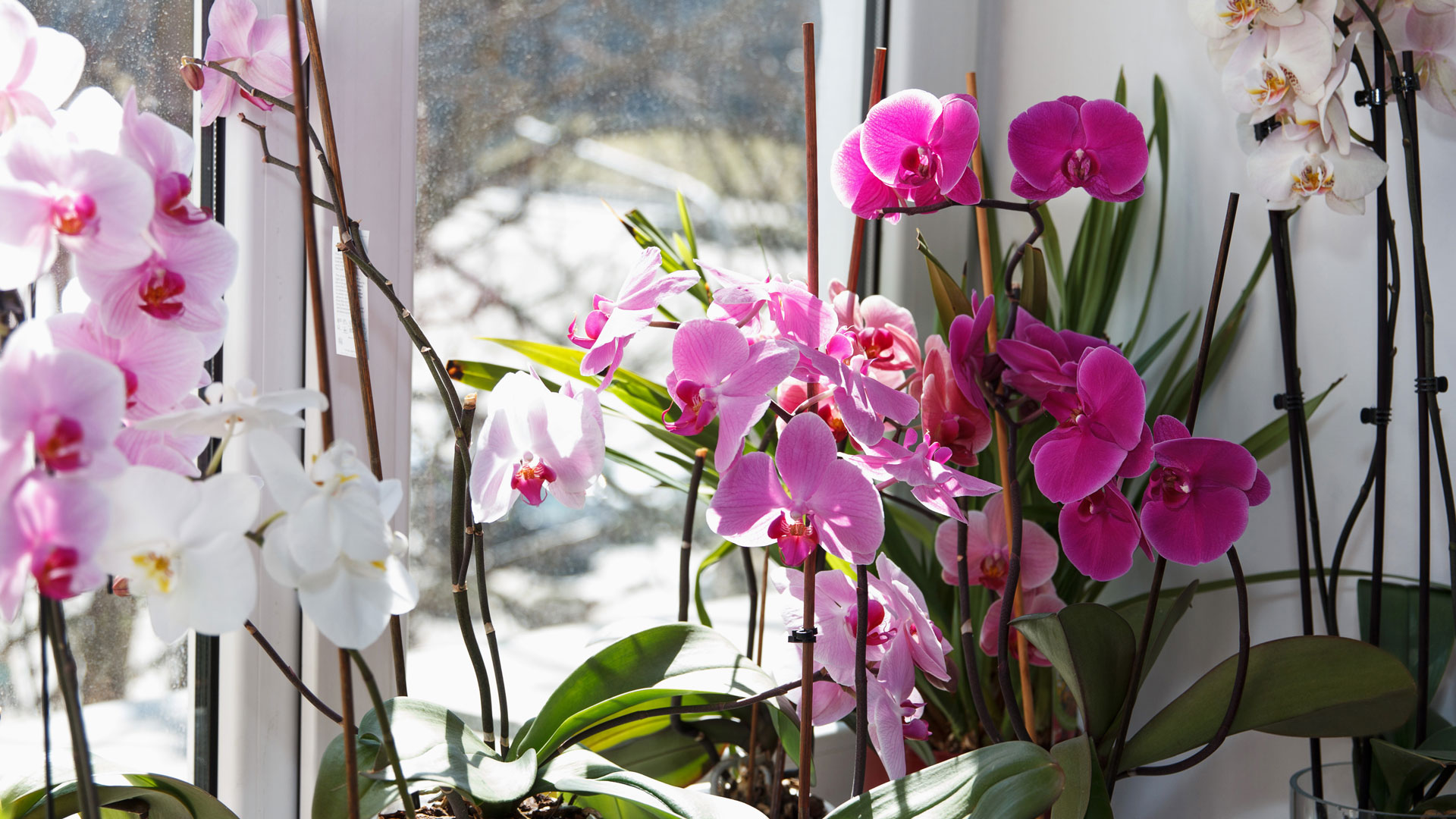
Finding the right spot in your home for them is a key part of getting orchids to thrive
"Taking care of potted orchids requires finding the right balance of sunlight and moisture," says Millie Durbak, orchid expert at Prestige Flowers. "I recommend placing them in a location with bright, indirect sunlight, such as near an east or north-facing window."
Sign up to our free daily email for the latest royal and entertainment news, interesting opinion, expert advice on styling and beauty trends, and no-nonsense guides to the health and wellness questions you want answered.
Direct sunlight can burn the foliage, which is why indirect sunlight is best and it's one of the key things to remember if you want to find out how to care for orchids successfully.
Whether you’re growing orchids in the living room, bathroom or greenhouse there are some common requirements to bear in mind. All orchids thrive on humidity which must be balanced with temperature, so as the heat rises so does the humidity. This makes the bathroom an ideal environment for orchids - a sure way to add a decorative touch to make a bathroom look expensive on a budget.
They also need good air circulation around them to stay healthy so don't cramp their style. Avoid positioning orchids near heating vents too where it will be too hot, or close to doors that could expose them to cold drafts. Like many indoor plants, they won't respond well to extremes of temperature.

Millie is the houseplant expert with specialist knowledge of orchids at Prestige Flowers. Recently awarded the Ethical Company Award scoring 100/100, Prestige is proud to be one of the UK’s most sustainable florists.
2. Get the watering needs right
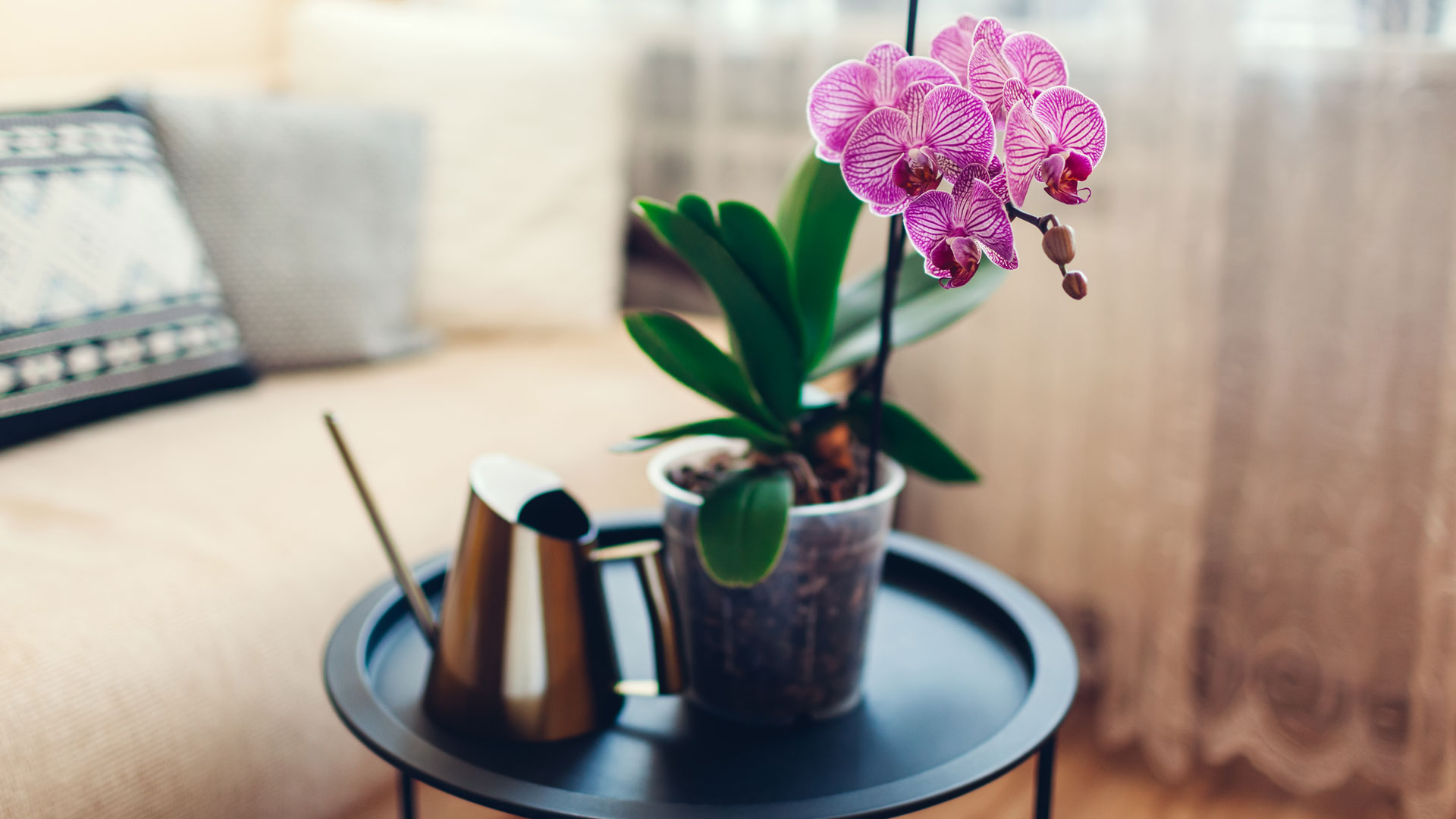
Watering is one of the trickiest aspects of orchid care to get right
Similar to determining how much to water your lawn the watering needs of an indoor orchid vary according to the season and you should always check how moist or dry the compost is beforehand by pressing the compost with your finger.
As a general rule aim to water your orchid once a week in summer when your plant will be thirstier. Reduce watering to no more than every two to three weeks in winter, when your plant needs less.
Checking the roots of your orchid is a good way to see if you're hydrating it correctly. If the roots are green all is well. But if they're brown it means you're overwatering the plant, while if they're grey or white you're not watering it enough.
Submerge the pot into a sink or bowl of water for a few minutes to let the roots take up what they need. Alternatively, hold the pot under a tap for a minute, allowing water to refresh the compost and drain through. Make sure the water is at room temperature, and always make sure your plant is fully drained before returning it to its decorative pot.
If you live in a hard water area it's best to use rainwater or distilled water instead of tap water, as orchids will do better on this - it's also a great way to embrace sustainable garden ideas.
3. Mist orchids daily as they love humidity
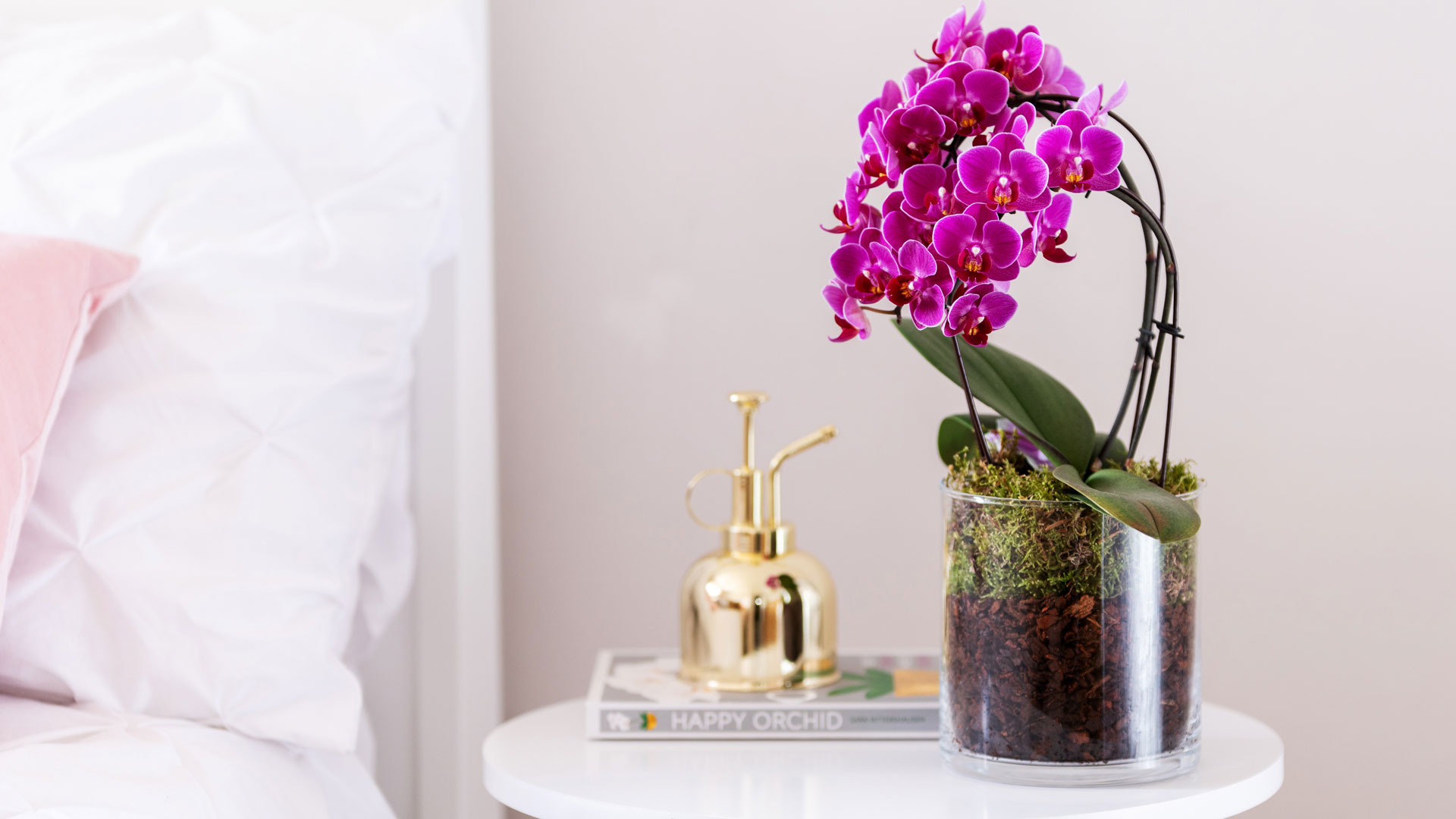
Orchids are tropical plants that respond well to being misted regularly
Orchids love humid conditions because they’re tropical plants so it's a good idea to keep a plant mister on hand for spritzing them. Again, use distilled water or rainwater if you live in a hard water area as the impurities in tap water can cause a build-up that disfigures the leaves.
You can mist the leaves a couple of times a day unless the soil feels wet, in which case cut back for a while. If orchid leaves have brown tips it's a sign they need a refreshing mist of moisture to perk them up.
The love of humidity could qualify orchids as a great choice of plants to help condensation in any room.
4. Feed your orchid

Feed your orchid with the correct fertiliser and you will be rewarded with plenty of flowers
Advice varies on this but the experts we consulted think that although your orchid will survive without fertiliser, it’s a good idea to feed your plants every two weeks during their active growth period, which is from March to November. Then knock back once your plant is in its dormant phase.
Use either a dedicated orchid feed or a general houseplant feed such as those by Baby Bio. In spring a high-potash fertiliser like Tomorite will help to encourage flowering. Just be sure to dilute it to half the recommended dosage on the package. If you use too much fertiliser this can result in lots of leaf growth but reduced flowering.
5. Keep orchids in shape
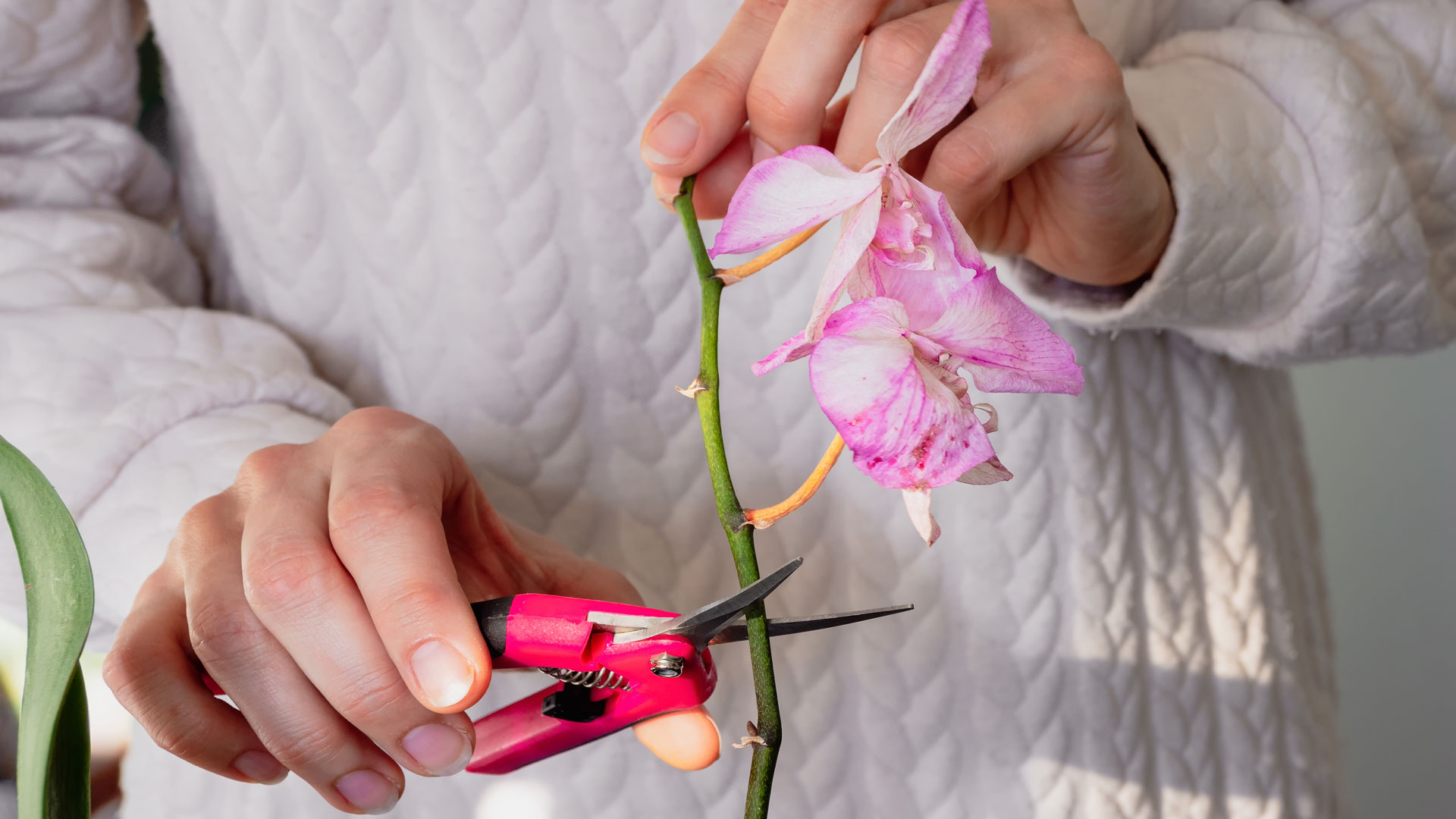
Snip off any faded flowers, brown leaves, and shrivelled roots
Keeping your orchid trim and shapely is a great way to encourage new blooms and healthy growth. Orchid blooms flower for up to 12 weeks, then fade or fall off. Then is the time to prune your plant and get rid of any small lateral branches that develop and can spoil the shape of the plant.
Snip whole flowering stems back to soil level once flowers have faded and stems are brown. Dry, shrivelled roots protruding from the bark compost can also be cut off without harming the plant.
6. Repot when necessary

Orchid bark provides an oxygen-rich environment that encourages strong root development and vigorous plant growth
Orchids thrive in specially formulated bark compost and will need repotting every 4-5 years, or sooner if the bark has begun to deteriorate or your plant is showing signs of being pot-bound.
You don't necessarily have to transfer your orchid to a larger pot. They will return to the same pot quite happily after a change of compost. To repot an orchid, remove the old compost, check for root damage, and pull off any dead roots that will come away easily.
Hold the plant in place inside the pot with the base roughly where it will eventually rest, and begin to pack bark compost around the roots, tapping the pot firmly as you do so to shake the compost down amongst the roots.
Water and keep a close eye on your orchid plant for a couple of weeks afterwards while it settles down.
FAQS
How do you take care of potted orchids?
Taking into account the right mix of temperature, humidity, and watering and feeding needs is key to finding out how to care for orchids correctly.
Orchids like to be in bright positions in your home, but not in direct sunlight as that can burn the leaves. They also don't like being near a radiator or being exposed to drafts, so try and avoid locations with either of these.
"One other thing they don't like being near is fruit, as it can shorten the flowering time of the orchid," says Andy Burton, managing director of Love Orchids. So don't position them next to the fruit bowl.

Andy has worked in horticulture for eight years, and joined the family business that was established by his grandfather in 1961. He set up Love Orchids as an online orchid retailer at the start of lockdown in 2020, to save plants going to the compost heap. Since then he has continued to develop the product range, and is now a leading online retailer of orchids in the UK. He introduced the Orchid Club, which offers access to surplus plants as well as free care advice.
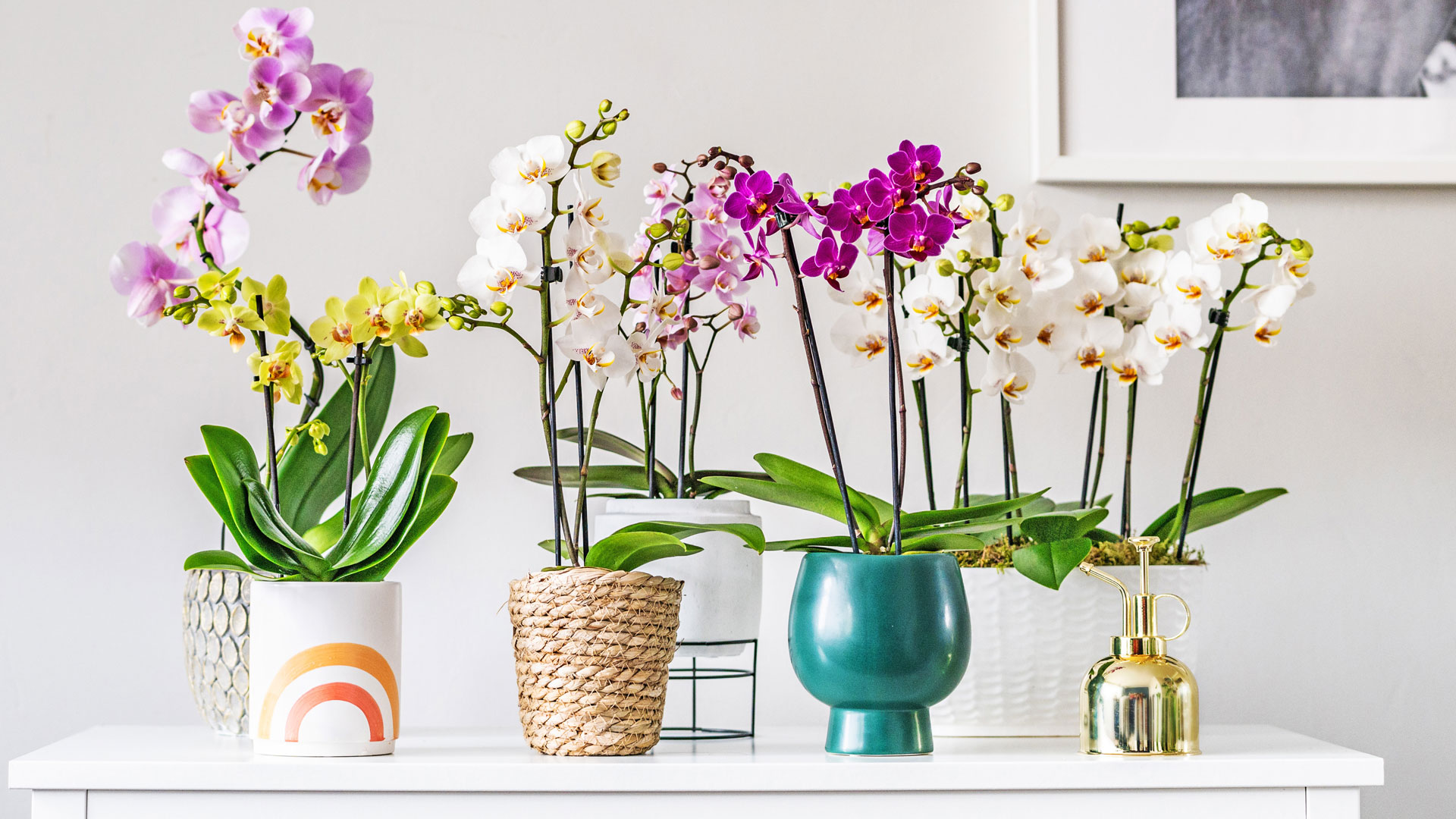
Orchids come in a wide range of colours and flower shapes
What do you do with an orchid after the blooms fall off?
If a flower spike dries up completely, it can be cut off. The orchid will re-grow a new spike if it's kept in the right conditions.
"You will need to be patient though," says Andy Burton. "Most of the time you can get your orchid to re-flower, but it may take several months. Once all the flowers have fallen off and you've cut the stem off, it's just a waiting game. The plant will not require very much water at all, only when the roots look dry in the pot."
Sometimes, after waiting a few months, the flowering process can be triggered by moving the plant to a different room, or you may notice that it starts to grow a new stem when you turn the heating on in winter because of the change in conditions.
Before you snip the stem be sure there's no chance of more flowers. "If the orchid is a Phalaenopsis type and the spike is still green, the flower spike can be cut back to just above the highest node," explains Amy Malin of the Orchid Society of Great Britain. "These orchids often form secondary spikes from their nodes."
Some orchids, such as some Dendrobiums, form flowers on the pseudobulb, which is a tiny storage organ. "When these fall off, just keep caring for your orchid as usual," explains Amy. "New flowers can form on old or new pseudobulbs if the plant is kept healthy."

Amy is the Secretary of the Orchid Society of Great Britain (OSGB), which was established in 1951. Amy has been growing orchids for some time and her particular interest is orchids that can be grown in the home and encouraging others to take up the hobby. She can draw on the knowledge and expertise of the OSGB's members, who share advice, organise lectures and show orchids.
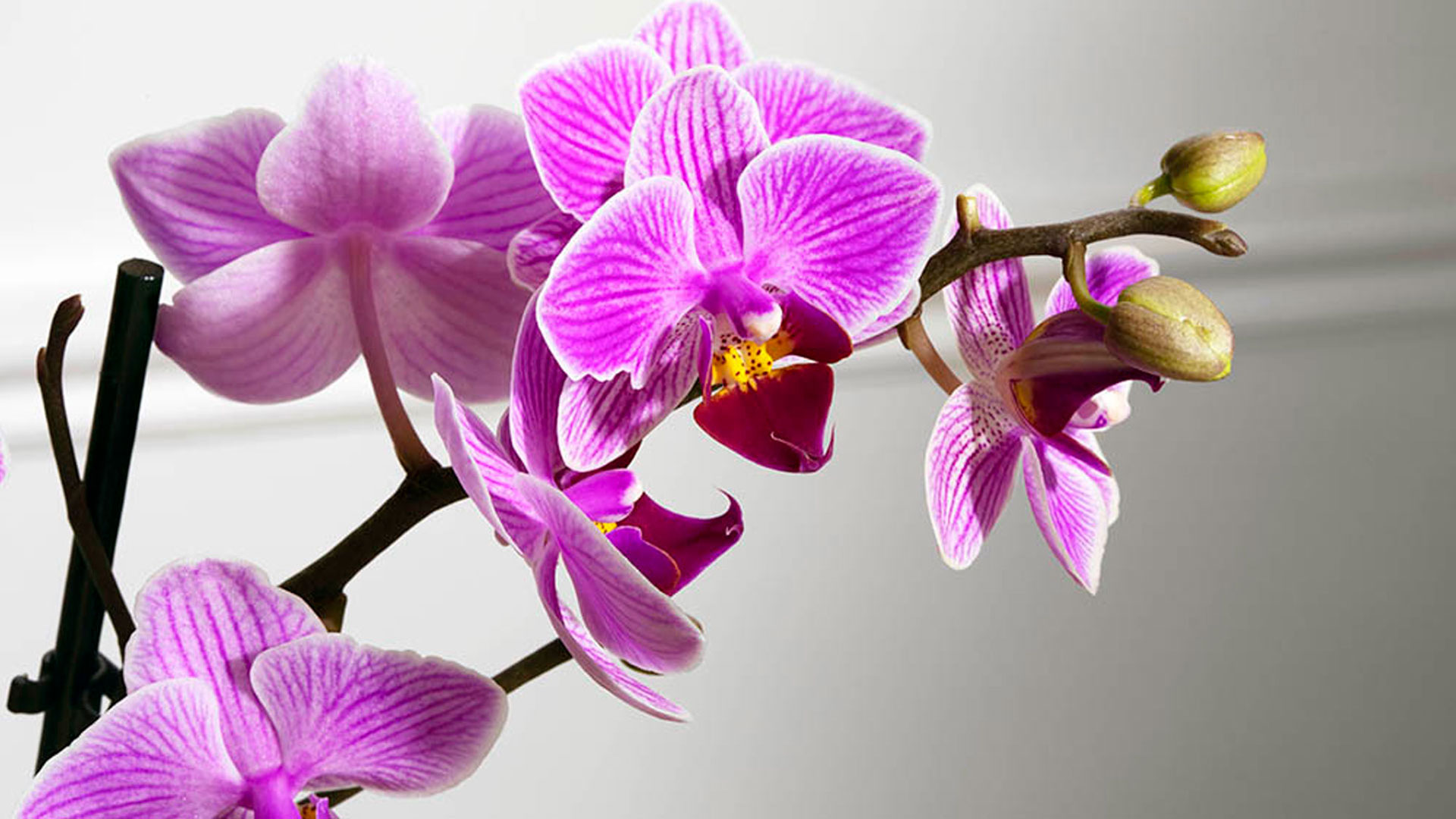
Feed and water your orchid correctly and you will be rewarded with plenty of blooms
How often do you water orchids?
How often should you water an orchid? "Less than you think," says Andy Burton. "The main cause of problems with orchids is overwatering. If you can see the roots through a clear pot then you will see them going a silvery/grey colour and starting to look a bit dry. Then it's time to water it." Incidentally, we found out recently that this is what causes bay tree leaves to turn brown.
Take the orchid out of its decorative pot and stand the plastic pot in some water for 10 minutes before letting it drain out completely. Alternatively, suggests Andy, you can place one ice cube onto the bark and simply let it melt in.
It also depends on the type of orchid. "Some orchids, such as Phalaenopsis types, like to dry out in between waterings," explains Amy Malin. "Others, such as Paphiopedilums, like to remain evenly moist. The best guide is to look at your orchid's media and roots, something that is made much easier if it's in a clear pot."
Never leave your orchid sitting in water or let it become waterlogged. If in doubt, it's better to underwater than to overwater an orchid. "The frequency of watering also depends on the environment," adds Amy. "In the summer orchids will dry out faster so require more frequent watering. During winter, the opposite is true."
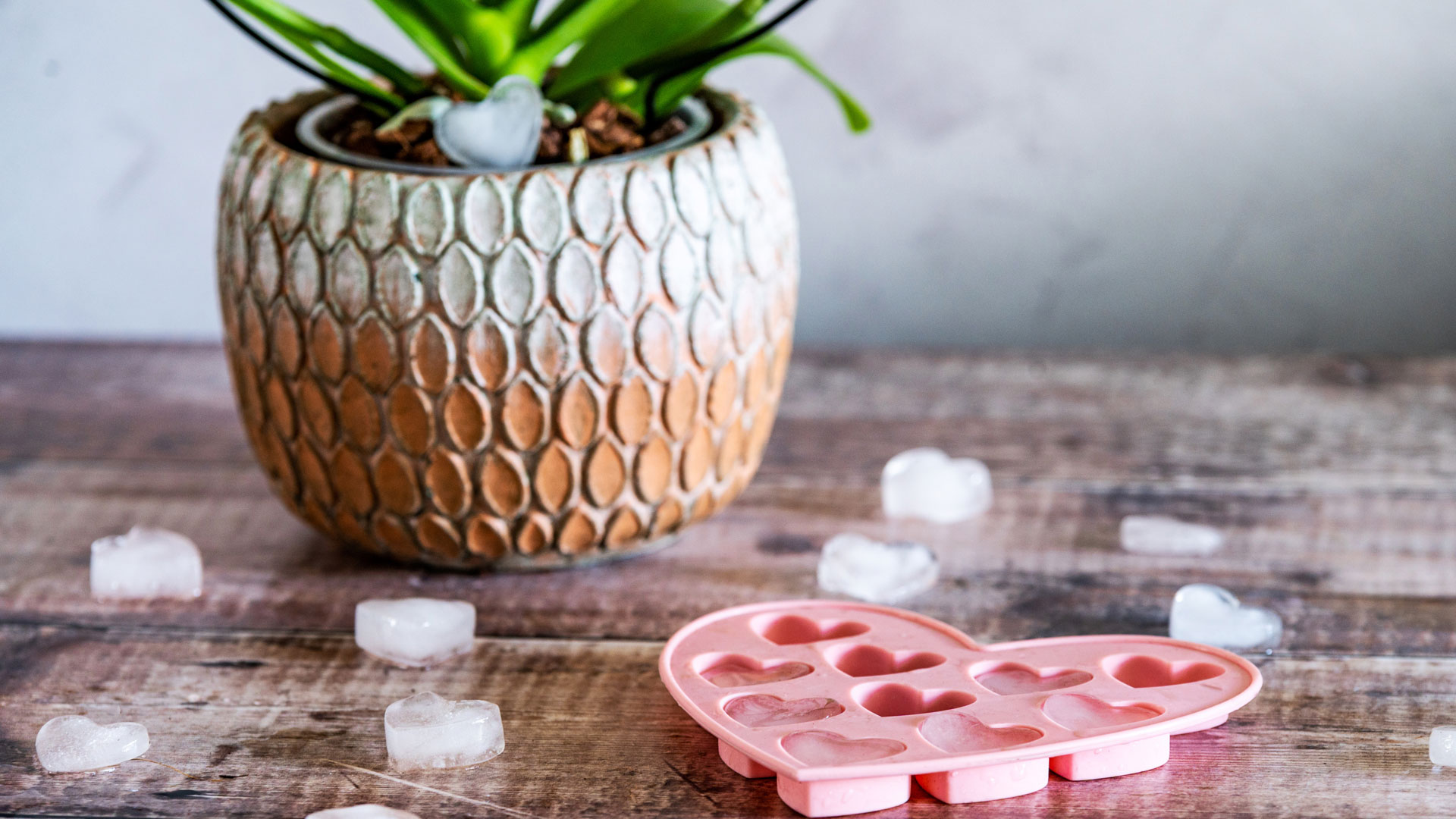
Using ice cubes to 'water' orchids is a surefire way to avoid overwatering it
What room temperature is good for orchids?
Orchids are usually classified into groups that include cool, intermediate or warm-growing varieties. We asked the Orchid Society of Great Britain for the lowdown on what this means.
"Most orchid nurseries will provide information about which category each orchid is in," says Amy Malin. "If you're unsure about which category your orchid fits into, the best thing to do is to find out its general type and research this. Most orchids will benefit from day and night variations in temperature, too."
Warm-growing orchids, such as Phalaenopsis or Cattleya varieties, prefer 16-18°C at night and 18-29°C during the day.
Cool-growing orchids like Dendrobium need a minimum of 10°C at night, with around 20°C during the day.
Intermediate orchids such as Paphiopedalum need a minimum 13-15°C by night and around 24°C in the day.
"Orchids are pretty tolerant though," adds Andy Burton. "Temperatures of about 15°C should be fine."
Finding out how to care for orchids is easy if you remember these easy pointers provided by the experts who know best.
Lifestyle journalist Sarah Wilson writes about flowers, plants, garden design and trends. She has studied introductory garden and landscape design and floristry, and also has an RHS Level 2 qualification in the Principles of Plant Growth and Development. In addition to homesandgardens.com and livingetc.com she's written for gardeningetc.com, Real Homes, Modern Gardens and Country Homes & Interiors magazines. Her first job was at Elle magazine, during which time a trip to the beautiful La Colombe d'Or in St-Paul-de-Vence led to an interest in writing about all things botanical. Later as lifestyle editor at Country Homes & Interiors magazine the real pull was the run of captivating country gardens that were featured.



